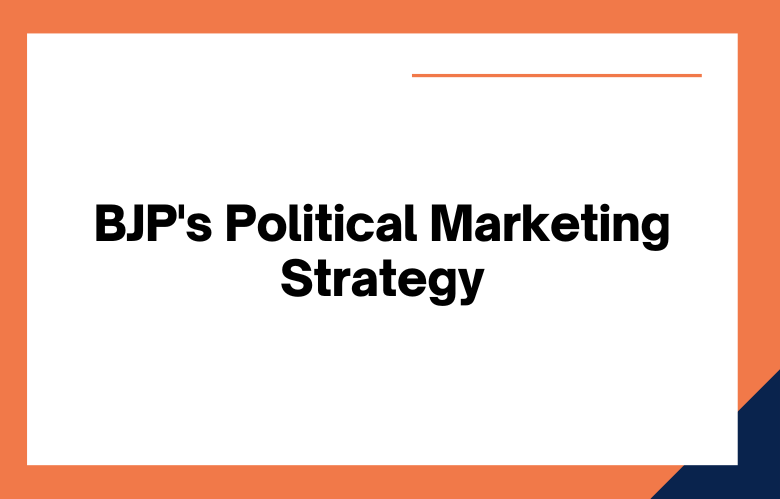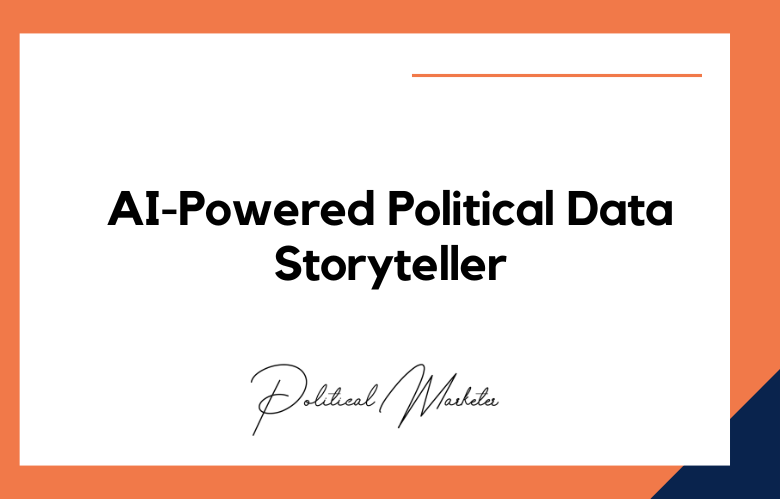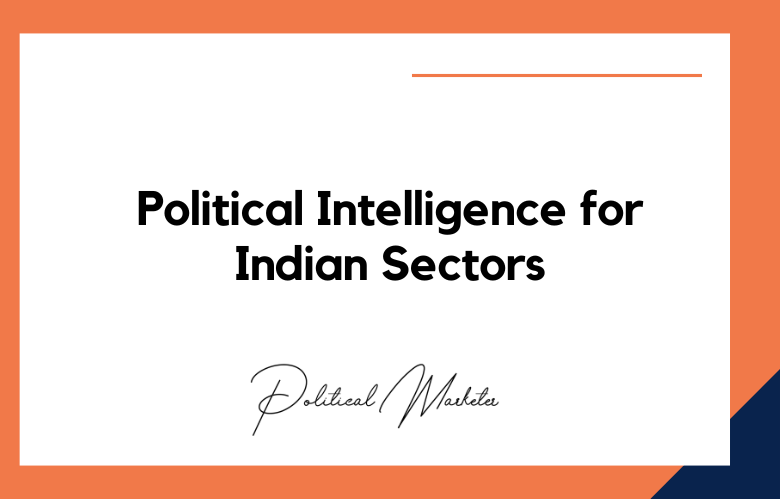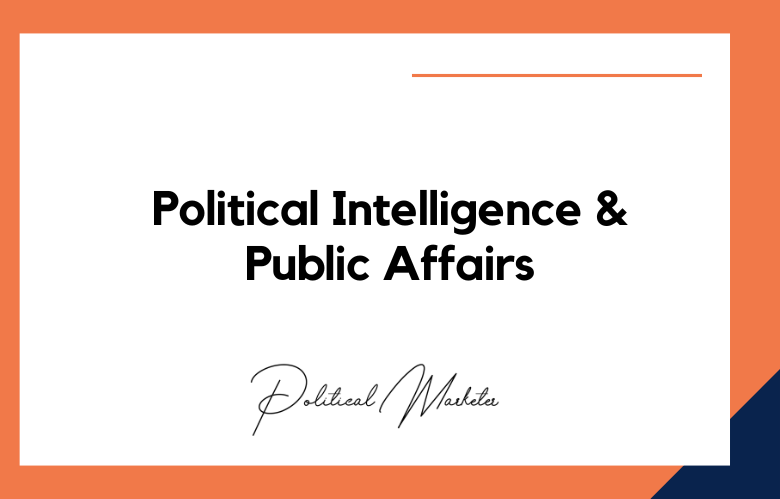The Bharatiya Janata Party (BJP) is one of India’s two major political parties; the other is the Indian National Congress. The BJP is currently the ruling party, having won a resounding victory in the 2019 general election.
So, what is the BJP’s secret to success? In short, it’s political marketing. Let’s dive deeply into the BJP’s political marketing strategy to see how they’ve achieved such impressive results.
BJP’s Political Marketing Strategy
The BJP was founded in 1980 to create a “strong, prosperous, and self-reliant India.” Since then, the party has grown in strength and now has a majority in the lower house of parliament.
The BJP’s ascent to power was driven by several factors, including its highly effective political marketing strategy.
The party’s earliest ad campaigns were focused on building its brand and raising awareness of its activities. One of the party’s first ads featured footage of then-Prime Minister Indira Gandhi giving a speech during the 1971 Bangladesh war.
The ad accused Gandhi of betraying India by unilaterally declaring a ceasefire without consulting with her cabinet or the parliament. This ad was highly influential in building support for the BJP among Indian nationalists.
In the late 1990s, the BJP began using Hindutva, or Hindu nationalism, as a critical part of its political platform.
The party used Hindu nationalist rhetoric and an aggressive marketing campaign to mobilize support among Hindu voters.
One famous example is the “India Shining” ad campaign launched in 2004.
The campaign featured a series of television and print ads that painted a picture of India booming economically and making progress on various social indicators.
However, the campaign has been widely criticized for being insensitive to the needs of poor and marginalized groups who were not benefiting from India’s economic growth.
The BJP returned to power in 2014 with a landslide victory in the general election. The party’s success was fueled by several factors, including its effective use of social media to reach voters.
The party used social media platforms like Twitter and Facebook to disseminate its message and connect with voters on a personal level.
The party also released a series of short videos called “Chai pe Charcha” (Discussion over Tea), which featured Prime Minister Narendra Modi interacting with ordinary citizens on various issues.
These videos were viral and helped bolster support for the BJP among Indian voters.
Developing a solid Brand identity
The BJP has worked hard to build a solid and recognizable brand identity. The party’s logo is one of the most recognizable in Indian politics, and its slogan—”Sabka Saath, Sabka Vikas”—is catchy and compelling.
The party also uses visually appealing campaign materials, such as posters and banners.
Appealing to Emotion
The BJP knows that emotions can be a powerful motivating force, which it uses to its advantage. The party’s campaigns often focus on invoking patriotic feelings or capitalizing on people’s fears.
Making Use of Celebrity Endorsements
Like many other political parties, the BJP relies on celebrity endorsements to help win over voters. Some celebrities publicly supporting the BJP include Amitabh Bachchan, Aamir Khan, and Kangana Ranaut.
Utilizing Social Media
Social media is a powerful tool for reaching many people quickly and efficiently.
The BJP has used social media platforms like Twitter and Facebook to get its message out.
The founders of the BJP knew that they needed to appeal to a wide range of people to succeed.
They came up with a three-pronged approach: cultural nationalism, economic liberalism, and social conservatism.
This approach has helped them win over voters from all walks of life.
Cultural nationalism is the idea that India is, first and foremost, a Hindu country and that Hindutva—the Hindudom—should be its guiding principle.
This approach has proved incredibly popular with Hindu voters, who comprise 80% of the population.
It also helps that the BJP has close ties to Hindu nationalist organizations like the Rashtriya Swayamsevak Sangh (RSS) and the Vishva Hindu Parishad (VHP).
Economic liberalism believes that market forces should operate without government interference.
This ideology resonates with India’s rapidly growing middle class, which seeks opportunities to get ahead.
The BJP’s economic policies have led to strong economic growth, endearing them to voters.
Social conservatism is the belief in traditional values and moral code of conduct.
This ideology appeals to voters looking to return to more traditional ways of life.
The BJP has made social conservatism a key plank of its platform, opposing same-sex marriage and pre-marital sex.
Launched One of the BJP’s most memorable campaigns was in 2013 before the party came to power in India. The campaign, “India Awaits,” featured a series of short films that told heart-warming stories about real-life Indians who had benefited from the BJP’s policies.
The films were hugely successful and helped the party win over many undecided voters.
Another one of the BJP’s most effective marketing campaigns was launched in 2017, shortly after the party came to power. The campaign, called “#MainBhiChowkidar” (I am also a watchman), aimed to counter accusations of corruption against the BJP by its opponents.
The campaign featured short videos and social media posts in which everyday Indians talked about working to make their country a better place.
The “#MainBhiChowkidar” campaign proved hugely successful. Many people used social media to support the BJP. The hashtag eventually trended on Twitter and became a hot topic on social media in India.
Microtargeting Voters
The BJP has used big data and analytics to micro-target potential voters with precision.
For example, the party used data from social media platforms to identify which issues were most important to voters and then tailored its messaging accordingly.
This helps them ensure their message is relevant and resonates with voters.
The first thing to know about the BJP’s political marketing strategy is that it focuses heavily on Hindutva.
Hindutva is a right-wing Hindu nationalist ideologue emphasizing Indian culture and values over Western influence.
The BJP has been accused of using Hindutva to polarise the electorate and consolidate power. Whether or not this is true, there’s no denying that Hindutva is a central component of the BJP’s identity.
A vital element of the BJP’s marketing strategy is its use of social media.
The party was an early adopter of social media platforms like Facebook and Twitter, and it has used these platforms to reach out to potential voters, spread its message, and attack its opponents.
The BJP was even accused of using social media to manipulate public opinion during the 2019 Indian general election. Regardless of whether or not these accusations are true, it’s clear that social media is a crucial part of the BJP’s marketing strategy.
An essential element of the BJP’s marketing strategy is its focus on youth outreach.
The party recognizes that India’s population is young and that this demographic is highly influential in voting decisions.
To this end, the BJP has made efforts to appeal to young voters through initiatives like its “Narendra Modi Mobile App” and its “Ek Bharat Shreshtha Bharat” campaign (which aims to promote unity among India’s diverse population).
One of the BJP’s most influential political marketing strategies is targeted advertising.
The party uses data from social media platforms like Facebook and Twitter to micro-target potential voters with ads tailored to their interests.
For example, voters who are interested in environmental issues might see an ad about the BJP’s environmental policies.
This targeted approach helps the party communicate its message to the most likely receptive voters.
Another strategy the BJP has used effectively is building support amongst essential influencers.
The party recognizes celebrities and other thought leaders’ influence over public opinion and has worked hard to court their support.
For example, Amitabh Bachchan, one of India’s most famous actors, is a well-known supporter of the BJP. His endorsement can go a long way in convincing others to give the party a chance.
The first thing to understand about the BJP’s political marketing strategy is that it relies heavily on social media.
The party has an official presence on all major social media platforms, including Facebook, Twitter, and Instagram.
In addition to maintaining these official accounts, the BJP encourages its supporters to create and share content about the party on social media.
This strategy has effectively reached potential voters who might not be exposed to the party’s message.
In addition to social media, the BJP also uses more traditional marketing channels such as television, radio, and print ads.
However, how they utilize these channels sets the party’s marketing strategy apart from that of other political parties.
Rather than simply relying on broadcast ads, the BJP produces highly targeted ad campaigns that appeal to specific demographics.
For example, the party has run ads explicitly targeting women and youth voters to increase its voter base.
The BJP’s marketing strategy is working. In addition to winning a majority in the 2019 general election, the party has also seen a surge in membership and support across India.
With elections scheduled for 2024, it will be interesting to see if the BJP can maintain its momentum or if other parties can mount a challenge.
Developing a Support Base
The BJP has always placed great emphasis on developing a solid support base. The party knows that many supporters are essential for any political party to survive and thrive.
To this end, the party has developed a comprehensive membership drive strategy. This strategy involves reaching out to people from all walks of life and persuading them to join the party.
Connecting with the People
Another critical element of BJP’s political marketing strategy is its focus on connecting with the people. The party recognizes that connection with the people is essential for any political party to succeed.
To this end, the party organizes regular meetings and events where leaders can interact with party workers and ordinary people.
Use of Social Media
Social media is an essential tool in BJP’s political marketing arsenal. The party uses social media platforms such as
Twitter, Facebook, and WhatsApp to reach its target audience. The party can connect with many people through social media at minimal cost.
Keeping up with the Times
The BJP is always focused on keeping up with the times. The party knows that to stay relevant, it must continuously innovate and evolve its strategies.
For example, in recent years, the party has started using big data analytics to understand public sentiment better and craft its campaigns accordingly.
Creating Positive News Cycles
The fifth and final element of BJP’s political marketing strategy is creating positive news cycles around its campaigns and activities. The party understands that media coverage is essential for any political movement to be successful.
To generate positive news cycles, the party often releases catchy slogans and taglines along with its campaign materials.” Acche Din Aane Wale Hain” (“Good Days Are Coming”) was one such slogan that helped create a positive buzz around BJP’s electoral campaigns in 2014.
Use of Technology
The BJP has been at the forefront of using technology in political campaigning.
For example, they were one of the first parties to use 3D holograms of their leaders to reach out to voters in remote areas.
They’ve also used Virtual Reality (VR) to give people a 360-degree view of their leaders’ speeches.
This use of cutting-edge technology has helped them stay ahead of the competition and engage with voters more interactively.
The BJP has made clever use of technology in its marketing campaigns, using social media platforms such as Facebook and Twitter to reach out to potential voters directly.
The party has also harnessed data analytics to tailor its message to specific demographics and target swing votes. This use of technology has given the BJP a significant advantage over its rivals, which are slower to adapt to changes in media and communication technologies.
Personalization
The BJP has significantly used Prime Minister Modi’s personal story in its marketing campaigns. By highlighting his humble beginnings as a tea seller and his rise to become one of India’s most popular leaders, the party has sought to portray Modi as a man who understands the problems faced by ordinary Indians and is committed to improving their lives.
Personalizing the party’s message has helped endear Modi to voters and boosted support for the BJP.
Focus on Development
The BJP’s focus on development issues such as poverty alleviation, infrastructure development, and job creation resonates with voters looking for tangible improvements in their standard of living.
This focus on practical solutions to real-world problems has helped attract support from across the socio-economic spectrum, including many first-time voters who had previously been disengaged from politics.
Focusing on Positive Messaging
One of the critical components of the BJP’s political marketing strategy is focusing on positive messaging.
This includes highlighting the achievements of their party and government and painting a positive vision for the future.
This approach has helped them win over voters looking for a positive change.
The BJP’s Marketing strategy can be divided into four main pillars
True believers, social media, branding, and optics. Let’s go into detail about each one.
True Believers
The BJP’s base consists of Hindu nationalists deeply committed to the party’s ideology.
This core group of supporters is known as the “true believers.”
They are the ones who volunteer their time and resources to further the party’s cause.
For example, they might organize rallies or distribute pamphlets door-to-door.
While the true believers might not be as numerous as other groups within the party, they are considered their most valuable asset because of their loyalty and commitment.
Social Media
The BJP was an early adopter of social media and recognized its potential for reach and engagement. The party has significantly used social media platforms like Facebook, Twitter, and WhatsApp.
For example, the BJP used WhatsApp to spread fake news during the 2019 Indian general election.
This helped to consolidate support amongst its base and sway undecided voters.
Branding
The BJP has worked hard to create a strong brand identity. One of its most successful campaigns was the 2004 “India Shining” campaign, which sought to project India as a country on the rise economically.
The campaign was widely criticized for being out of touch with reality, but it helped boost the party’s popularity.
More recently, the party has been using slogans like “sab ka Saath, sab ka Vikas” (development for all) and “achche din” (good days) to capture voters’ imaginations.
Optics
The BJP understands that politics is as much about optics as it is about policy.
As such, it has invested heavily in creating positive visuals that help to strengthen its brand identity.
For example, Prime Minister Narendra Modi often wears colorful traditional Indian clothes when he makes public appearances.
This allows him to project an image of being in touch with his cultural roots while appearing modern and progressive.
The BJP’s Marketing strategy can be divided into another central pillar
Online advertising, offline advertising, personal selling, and public relations. Let’s take a look at each post.
Online Advertising
The BJP has a solid online presence and uses various digital marketing channels to reach its target audience.
These channels include social media, search engine optimization (SEO), and email marketing.
The party’s official website and social media pages are regularly updated with news stories, videos, and other content designed to appeal to its target audience.
The BJP also runs targeted online advertising campaigns on Google and social media platforms like Facebook and Twitter.
Offline Advertising
The BJP also uses traditional offline channels to reach potential voters. These channels include television, radio, and print media. The party runs regular advertisements on television and radio stations that are popular among its target demographic.
The BJP uses print media, such as newspapers and billboards, to reach potential voters in rural areas with limited internet access.
Personal Selling
Personal selling is another vital element of the BJP’s marketing strategy. The party relies heavily on face-to-face interactions with potential voters to win them over.
To this end, the BJP has an extensive network of volunteers who go door-to-door canvassing for votes and raising awareness about the party’s policies and platforms.
In addition, the BJP holds regular rallies and events where party leaders deliver speeches to large crowds of supporters.
Public Relations
The BJP also utilizes public relations to build support for its candidates and policies.
This includes holding press conferences, issuing press releases, and interviewing journalists from local and national media outlets.
In addition, the party often sends out teams of volunteers to participate in protest marches or other public demonstrations.
By doing so, the BJP generates positive publicity while raising awareness about its causes amongst the general public.
The first thing to note about BJP’s political marketing strategy is that it was very data-driven.
They used big data to micro-target voters and customized their campaign message for maximum impact.
This enabled them to reach out to crucial demographics they might have missed. For example, they could reach rural voters whom other parties often ignore.
They held rallies and public meetings in small towns and villages. This was the idea then, and it paid off for them.
Another critical element of their success was their focus on building a robust online presence. They used social media platforms like Facebook and Twitter to reach potential voters.
They also had a robust website that provided detailed information about their policies and achievements.
This was crucial in building trust with potential voters who might have been skeptical of the party’s promises.
It is also important to note that BJP’s political marketing strategy was not without its controversies.
They were accused of using fearmongering and divisive rhetoric to win votes.
However, despite these criticisms, there is no denying that their strategy was highly effective.
BJP’s Election Campaign Strategy
The BJP’s marketing strategy can be divided into three phases: pre-poll, during-poll, and post-poll.
We will take a look at each of these phases.
Pre-Poll Phase
In the pre-poll phase, the party builds its brand and creates awareness about its policies and achievements.
This is done through various means, including large public rallies, social media campaigns, and interaction with ordinary citizens.
One of the most vital aspects of this phase is the party’s membership drive.
The BJP has an extensive network of grassroots workers responsible for reaching out to potential voters and convincing them to support the party.
During Poll Phase
During the poll phase, the focus shifts to campaigning and voter mobilization.
The party releases its manifesto, outlining its vision for the country if it is voted to power.
It also undertakes intensive door-to-door campaigning and relies ponderously on social media to reach voters. Paid media is used to extend to air campaign commercials and ads.
Post-Poll Phase
Once the votes have been cast and counted, it is time for the post-poll phase.
In this phase, the focus is on consolidating support from victorious candidates and winning over those who have lost.
The party also begins preparations for the next election cycle by starting another membership drive and continuing its work on building its brand.
Conclusion
The BJP’s political marketing strategy has been integral to its success in recent years.
By microtargeting voters, using cutting-edge technology, and focusing on positive messaging, they’ve been able to engage with voters in a way that resonates with them.
As a result, they’ve been able to win support from a wide range of voters and contribute to their party’s impressive electoral successes.
We’ve unpacked the BJP’s political marketing strategy and its use of data, social media, personalization, and other digital channels to engage voters.
The party has successfully won elections and expanded its voter base using these methods. If you’re interested in exploring how to use similar strategies for your political campaign or consulting business, we can help.
Our team of experts runs campaigns and engages voters through digital channels.
Contact us today to learn about our services.
Call: +91 9848321284
Email: [email protected]











